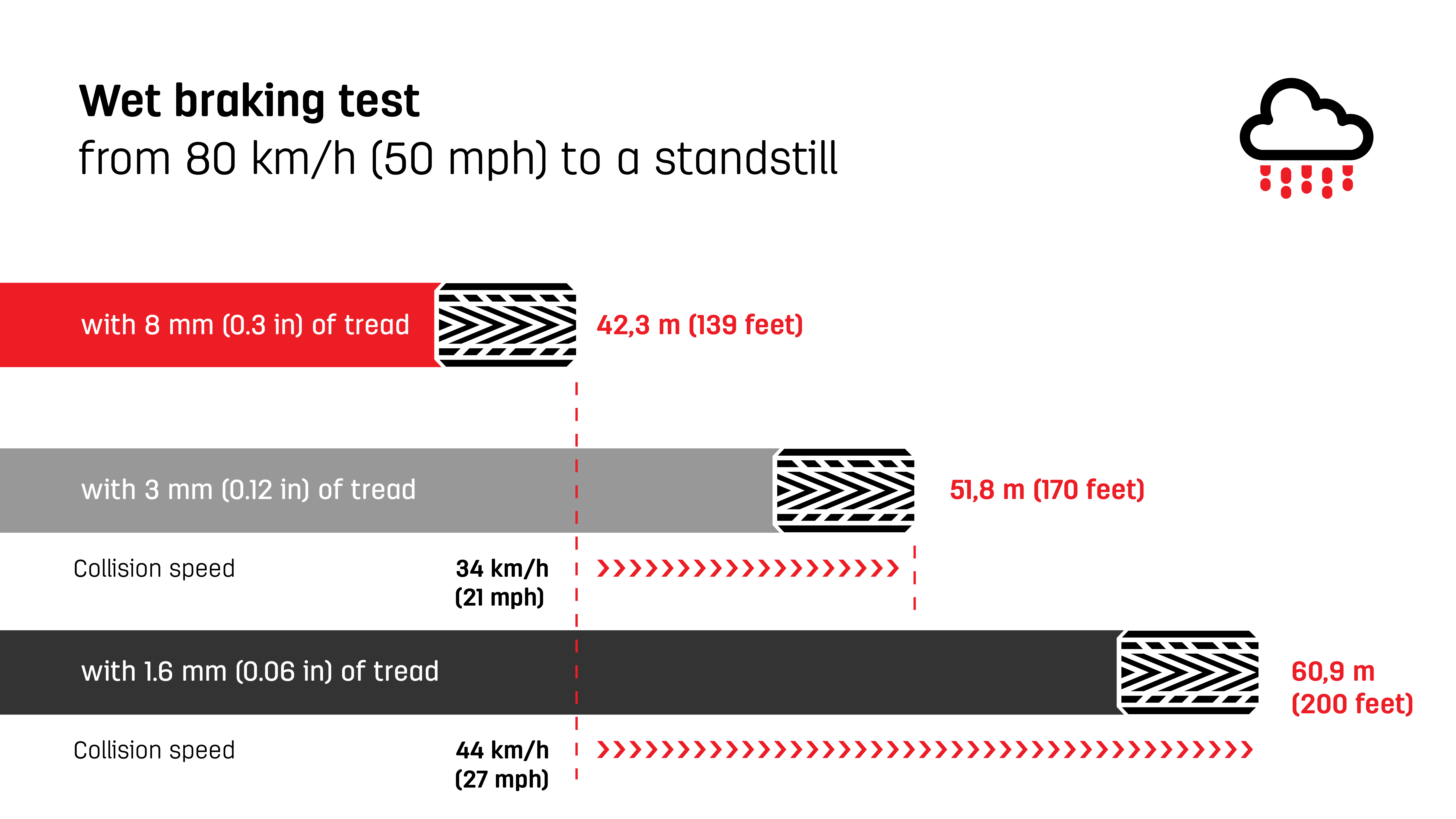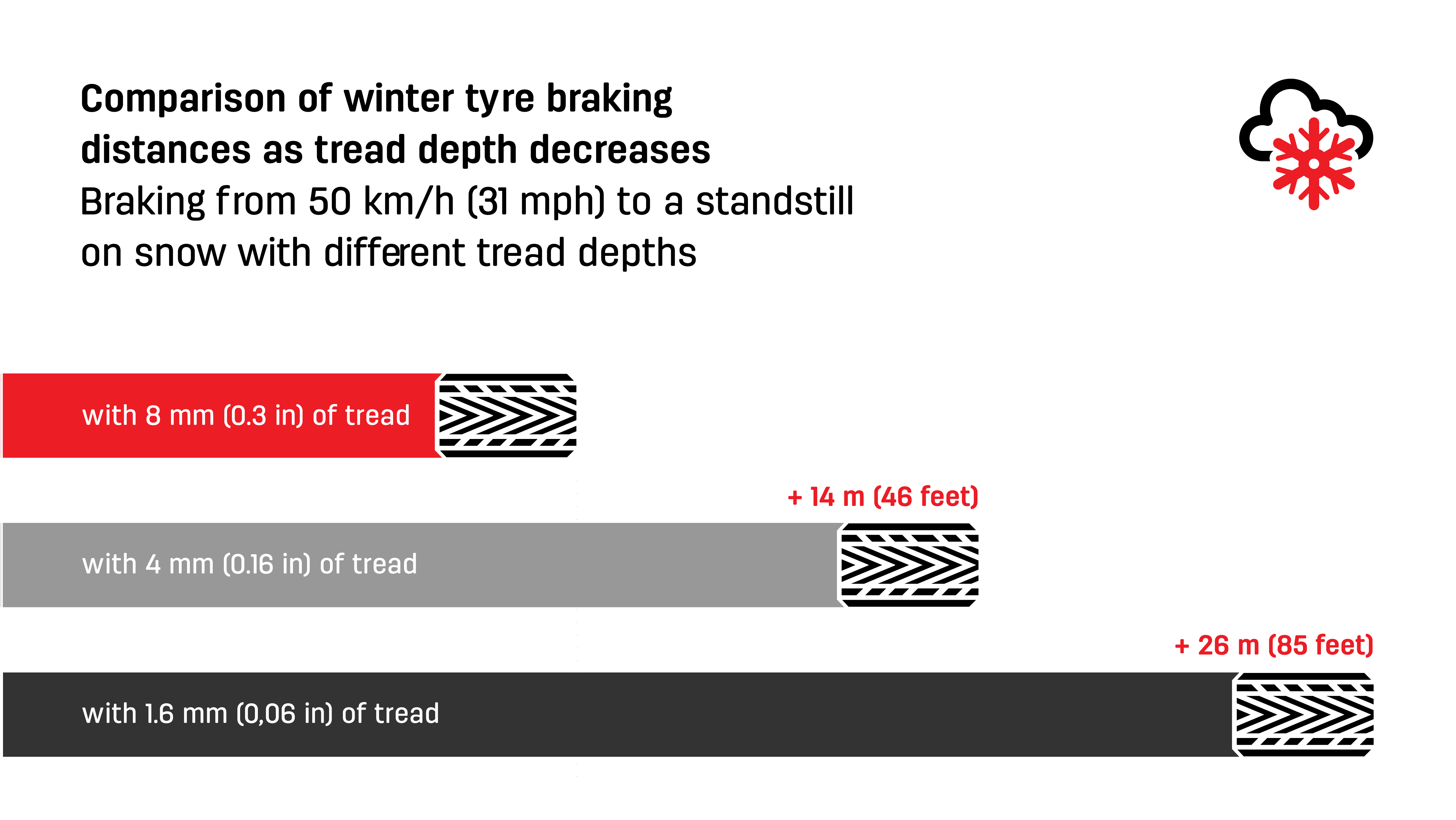
There are several reasons why you might need to change your tyres. Maybe it’s that time of year when you need to swap from winter tyres to summer tyres – or the other way round.
Maybe your tread depth has fallen below legal limits, you’ve had a puncture or your tyres have deteriorated in storage.
What you need to know is whether your tyres need replacing or repairing.
In the case of swapping tyres, that’s easy. Ask your local Uniroyal dealer to check for any issues before they change your tyres over. It may be that your tread depth is still fine, particularly if you have a relatively low annual mileage, but your tyres may have become spongy through lack of use. If they’re happy, it’s a simple case of switching one set of tyres for the other.

Your Uniroyal dealer will run through some mandatory checks to see if your tyres need replacing or repairing.
They will check:
1. Your reason for changing tyres
2. The quality of your replacement tyres (if kept in storage)
3. Your current tread depth
4. The location of any puncture
5. Any signs of run flat damage
With tread depth, it’s easy to tell if your tyres need replacing or repairing. It comes down to maths. In Europe, passenger vehicles, with fewer than eight seats, require a legal minimum depth of 1.6mm across 75% of the tyre’s width and 100% of the tyre’s circumference. This is also true of goods vehicles and light trailers not exceeding 3,500kg max gross weight.
Most vehicles that are larger, and motorbikes 50cc and over (with or without a sidecar) the legal minimum is 1.00mm and for mopeds and motorbikes under 50cc the original tread pattern must be visible.
In the USA, the minimum tyre tread depth is 3/32".
The correct profile depth. Safe in every season.
 *Test conditions: 205/55 R 16 H, ContiPremiumContact™ 5, Passt (2.9/Audi A4, braking on wet, from 100km/h to 0 km/h (status: 2015). The graphics shown here are for illustration purposes only. The braking distance of a vehicle depends on its type, its age, the brakes and the tyres used, as well as the road surface. (Source: Continental Reifen Deutschland GmbH). Tyre pressure in relation to the vehicle manufacturer's recommendation (Source: Continental Reifen Deutschland GmbH).
*Test conditions: 205/55 R 16 H, ContiPremiumContact™ 5, Passt (2.9/Audi A4, braking on wet, from 100km/h to 0 km/h (status: 2015). The graphics shown here are for illustration purposes only. The braking distance of a vehicle depends on its type, its age, the brakes and the tyres used, as well as the road surface. (Source: Continental Reifen Deutschland GmbH). Tyre pressure in relation to the vehicle manufacturer's recommendation (Source: Continental Reifen Deutschland GmbH).
 *Test conditions: 205/55 R16 91H, ContiWinterContact™ TS 830, VW Golf V, braking on snow, from 50km/h to 0 km/h (status: 2013). The graphics shown here are for illustration purposes only. The braking distance of a vehicle depends on its type, its age, the brakes and the tyres used, as well as the road surface. (Source: Continental Reifen Deutschland GmbH). Tyre pressure in relation to the vehicle manufacturer's recommendation (Source: Continental Reifen Deutschland GmbH).
*Test conditions: 205/55 R16 91H, ContiWinterContact™ TS 830, VW Golf V, braking on snow, from 50km/h to 0 km/h (status: 2013). The graphics shown here are for illustration purposes only. The braking distance of a vehicle depends on its type, its age, the brakes and the tyres used, as well as the road surface. (Source: Continental Reifen Deutschland GmbH). Tyre pressure in relation to the vehicle manufacturer's recommendation (Source: Continental Reifen Deutschland GmbH).
Finally, punctures. This is where it takes a professional eye to make the decision on whether your tyres need replacing or repairing. Only certain areas of the tyre can be repaired and this varies by tyre type and tyre size. As well as checking the location of the puncture, the fitter will check, among other things, your tread depth, any run flat damage, the ageing of your tyre and whether it has been repaired before.
Related Topics
-
 2023/03/31Uniroyal tyres are built to last. Assuming they’re not damaged, you should be able to enjoy tens of thousands of kilometres of happy, safe driving.Disposal of old or used tyresRead more
2023/03/31Uniroyal tyres are built to last. Assuming they’re not damaged, you should be able to enjoy tens of thousands of kilometres of happy, safe driving.Disposal of old or used tyresRead more -
 2023/03/31It’s a good idea to keep a range of tools and tyre changing equipment in your car so that you’re well prepared in case you have to repair or replace your tyre by the side of the road.Tyre changing equipmentRead more
2023/03/31It’s a good idea to keep a range of tools and tyre changing equipment in your car so that you’re well prepared in case you have to repair or replace your tyre by the side of the road.Tyre changing equipmentRead more -
 2023/03/31If you swap between summer and winter tyres, you have to consider where you will store the unused set in the months when they’re out of action.Storing tyresRead more
2023/03/31If you swap between summer and winter tyres, you have to consider where you will store the unused set in the months when they’re out of action.Storing tyresRead more